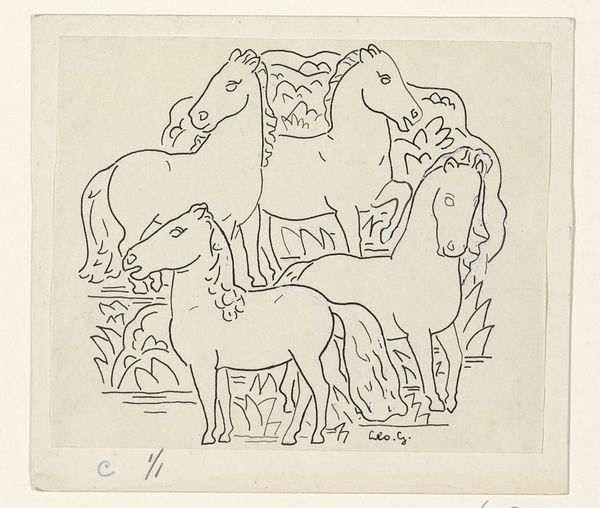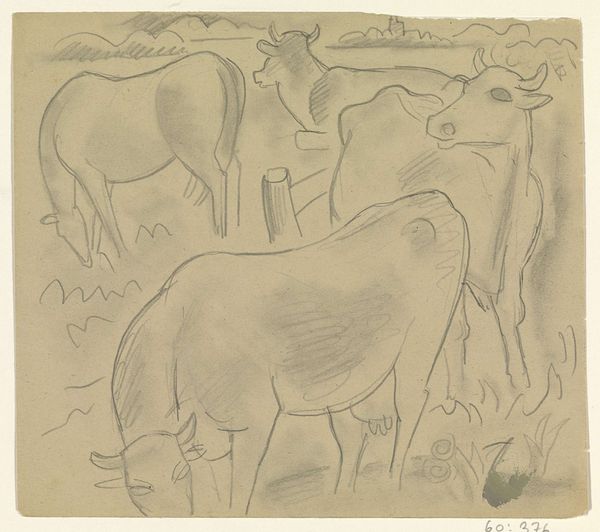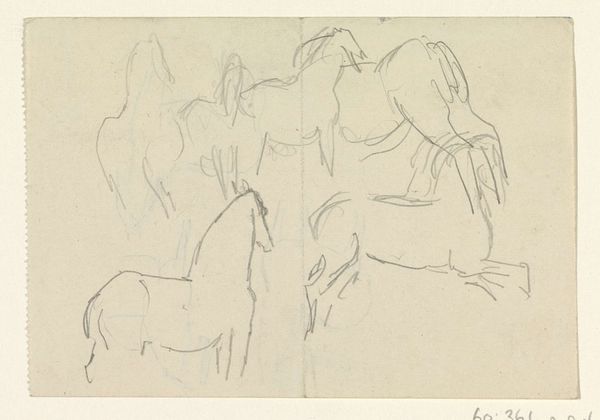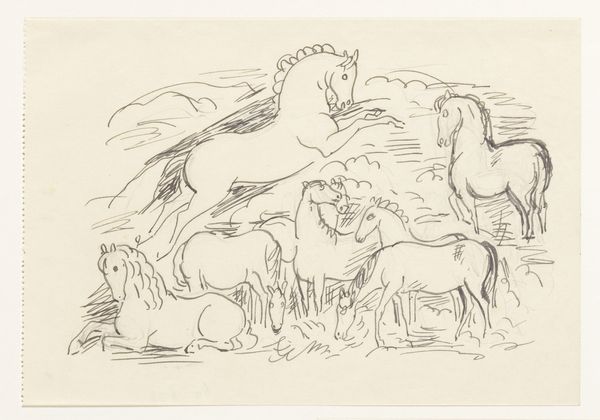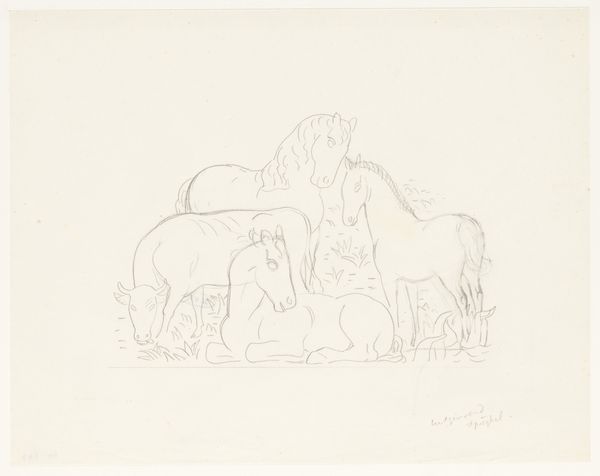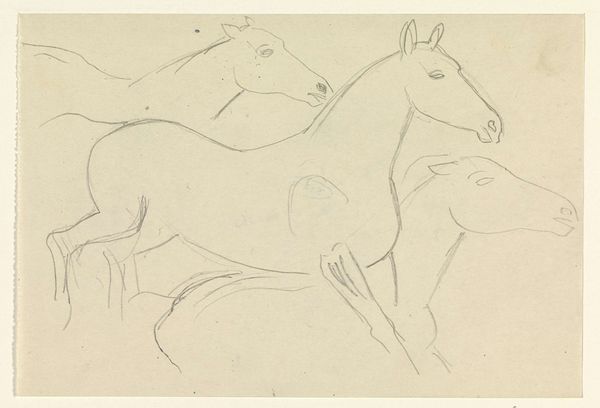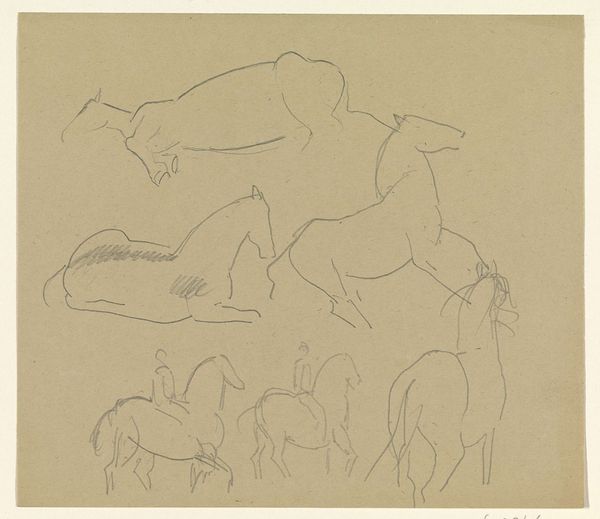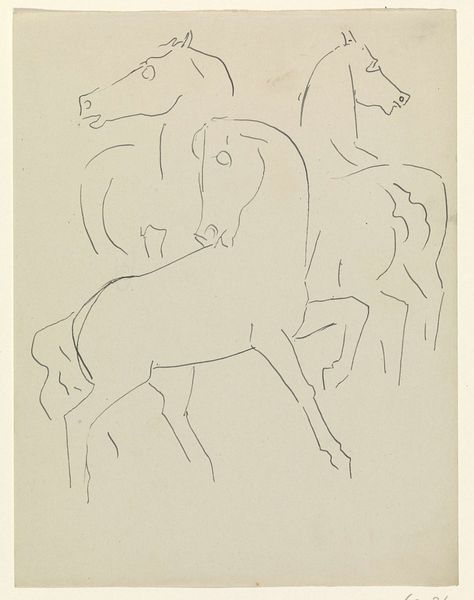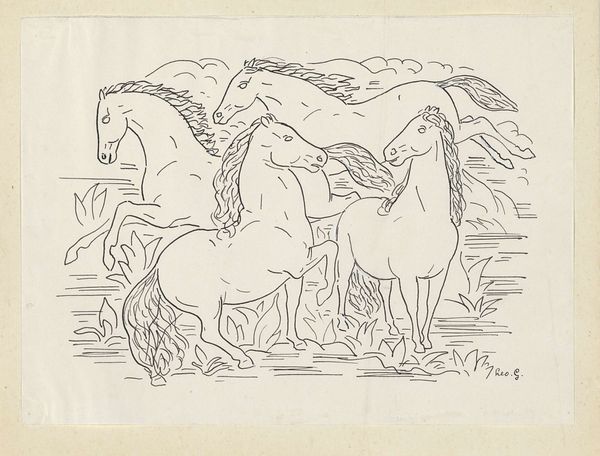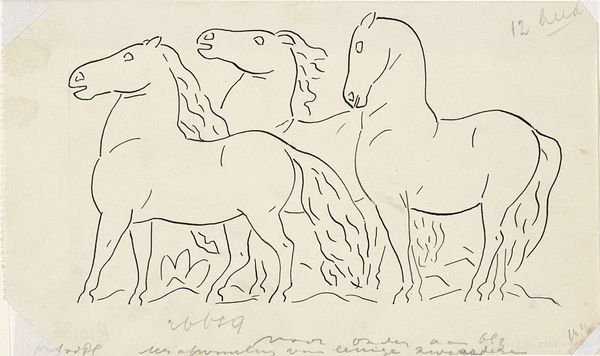
drawing, paper, pencil
#
drawing
#
pencil sketch
#
landscape
#
bird
#
figuration
#
paper
#
pencil
#
horse
Dimensions: height 179 mm, width 205 mm
Copyright: Rijks Museum: Open Domain
Curator: Here we have "Paarden en een koe," which translates to "Horses and a cow", a pencil drawing on paper by Leo Gestel. It's housed right here in the Rijksmuseum, and believed to have been created sometime between 1891 and 1941. What are your first impressions? Editor: Well, there's a dreamlike quality to it. The pale pencil lines, the unfinished details... it feels very immediate, almost like a fleeting thought captured on paper. Curator: Gestel, while exploring a diverse range of styles throughout his career, consistently engaged with modern art movements, but his depictions of rural subjects carry considerable social context. The act of sketching animals, linking to pastoral traditions, speaks volumes about the shifts in artistic priorities during this time. Editor: Precisely! And look at the way he uses such minimal lines to create such depth. It really makes you consider the artist's hand and how those tools interact with the paper. Did Gestel often sketch outdoors? The way the landscape seems to almost emerge from the animals hints at a strong connection between them and their environment. Curator: The Rijksmuseum's curatorial notes suggest this was likely part of Gestel’s exploration into new visual territories. Artists of his time questioned established academic conventions, and by focusing on the basics, like sketching en plein air, they challenged institutions by presenting these intimate studies as legitimate forms of artistic expression. Editor: And what about the audience’s relationship with those choices? What did it mean to consume art in sketch form rather than a finished painting? We see the raw labor and decision-making process much more clearly. Curator: That raw accessibility allowed a wider audience to access the artistic process, creating conversations and interpretations outside of the art world's elite circles. Gestel’s pencil, in a sense, democratized art by highlighting the beauty in simplicity. Editor: Definitely. Examining these drawings provides insights into Gestel's material world, the economics of his artmaking, and his attempt to communicate everyday pastoral scenes that are, actually, quite profound. Curator: Indeed. Considering the turbulent times he lived through, it adds another layer to the drawing; it almost serves as an exploration of identity, landscape, and freedom within the context of ever-changing social expectations. Editor: This glimpse behind the scenes is so important. I'll never look at a finished Gestel painting quite the same way again. Curator: Nor will I. Seeing his hand at work really deepens one's appreciation.
Comments
No comments
Be the first to comment and join the conversation on the ultimate creative platform.
